The best wearables for grassroots football teams
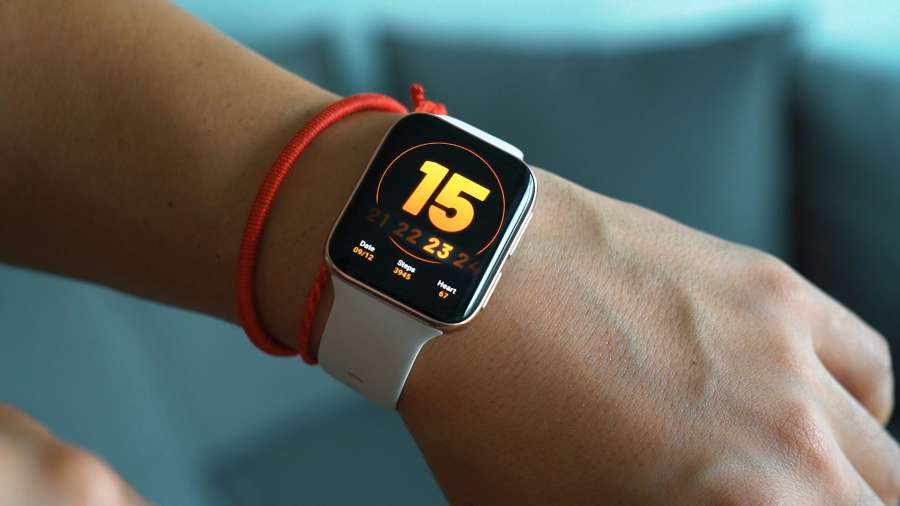
In the past few years, a lot of football-specific wearables have been developed. These sensors can give insight into your technical and physical skills. But how do you choose what wearable suits you best?
In this blog we will discuss a variety of football wearables available within a grassroots budget.
Hardware
Before we dive in, let’s first take a look at the different hardware of each device. Most devices have a combination of GPS sensors, heart rate sensors and IMU sensors. We’ll take a look at what each of these sensors does, and the technicalities involved with them.
GPS
The functionality of GPS needs little explanation. The GPS sensor can tell you something about where you were on the football field during the training/match. This could for example give you a heat-map of where you were most active on the pitch.
The GPS can also measure your distance covered and your speed. However, not all GPS devices can do this accurately! It’s important when comparing different GPS sensors, to have a look at the sampling frequency (Hz). This is how often per second the sensor notes down your location. The higher the frequency, the better the accuracy.
Football consists of a lot of small turns and short movements. If the sampling frequency is too low, these movements may not be noted correct (resulting in an over- or underestimation of your true speed and distance covered!). While your average smartwatch has a sampling frequency of 1 Hz, the wearables discussed in this article have a GPS frequency of 10-25 Hz, making them more suitable for tracking football.
IMU
IMU stands for Inertial Measurement Unit, which sounds complicated. It basically measures the movement (acceleration/deceleration) of the sensor in each direction. Combining this data with AI, the sensor ‘knows’ if you are moving to the side, forward or rotating. Like the GPS, it can give information about your distance covered and speed.
However, as it doesn’t know where you are, using solely the IMU will not be able to give you information on where on the field certain actions occurred. A big advantage of IMU compared to GPS is that it can measure ‘smaller’ movements. These sensors can give you information on your technical skills, such as ball touches, kicking power and number of passes.
The IMU consists of three parts (accelerometer, gyroscope, and magnetometer). Some sensors use all of these, while others only use one. Without getting too technical, in general you can follow the rule that the more hardware the sensors includes, the more it can measure. Just like the GPS, a higher sampling frequency will give more accurate results.
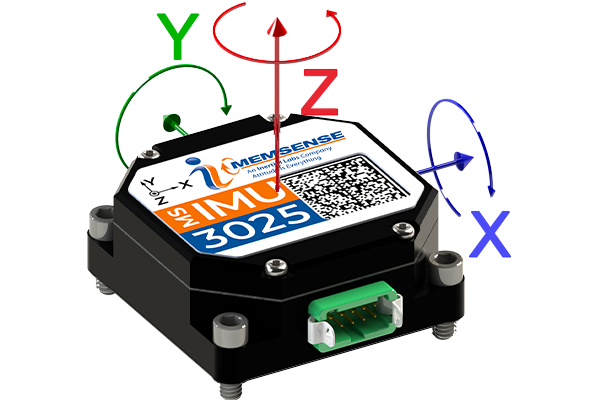
Heart rate sensor
Heart rate sensors are worn around the chest or wrist. The one thing a heart rate sensor can measure which GPS and IMU sensors can’t, is how intense an exercise is for you as a person. Although an exercise during the training (external load) is the same for all players, it may be much harder for one player to complete compared to the other.
Looking at your heart rate gives a good indication of this ‘internal load’. It can help you monitor the strain on your body to prevent injury and give insight into the number of calories burned during the training.
Choosing a wearable
Combining the hardware, the place where the sensor is worn, and the software will determine which stats the wearable returns. Which to choose depends on your preferences for a sensor. Which stats do you find interesting? What is your budget? Where would you like to wear the sensor? The table below shows a summary of each wearable - use it to pick the one that best suits you!
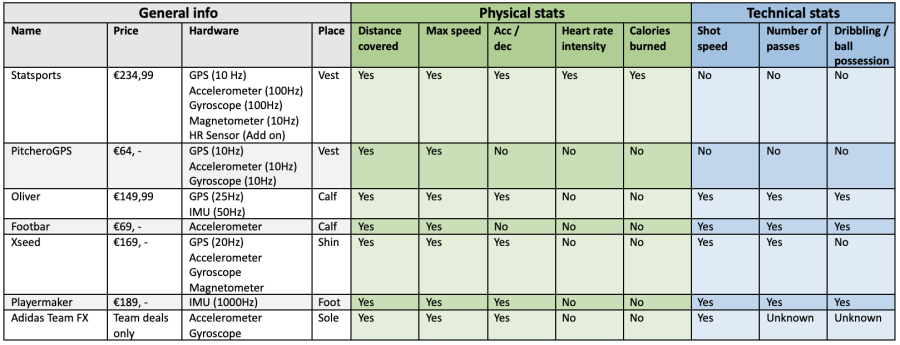
Best for: low budget
If you are looking for an adequate football sensor at a low cost, Footbar is a great option. The sensor is available for €69,- (occasionally cheaper when a sale is on). Footbar has no subscription costs for most of their features, making it a very affordable option.
Footbar gives a good overview of physical stats with distance covered, sprint distance, number of sprints, max speed, average sprint speed, and session intensity. It also provides a good variety of football technical stats with number of passes, number of shots, shot speed, dribbling and ball possession.
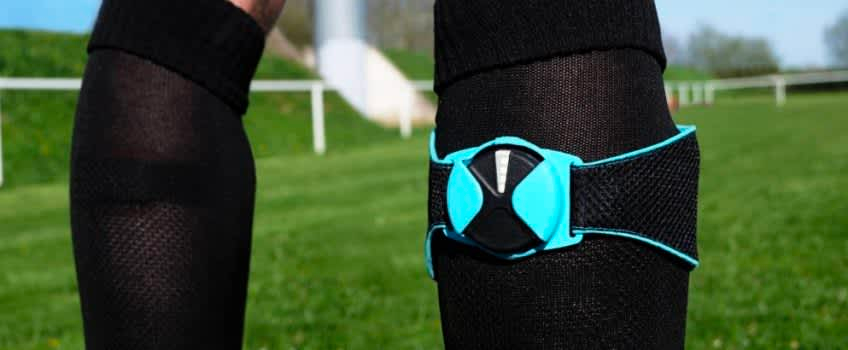
Best for: accurate results
For those of you striving for the most accurate results, Playermaker would be the best choice. The sensor is available for €189, - and comes with a 12-month free subscription for the corresponding app Cityplay. Afterwards, membership is around €180 per year according to some reviews written in 2022. So, definitely not the cheapest option around, but still interesting for those of you striving for excellent accuracy.
Equipped with an IMU of 1000 Hz it has by far the highest sampling frequency of the sensors discussed in here. Also, scientific research has deemed the sensor reliable and accurate (Waldring et al., 2021).
Playermaker provides all stats discussed in the table (except heart rate intensity and kcal burned). It’s worth highlighting that Playermaker makes a distinction between with / without the ball. So, it does not just provide you with distance covered, but also your distance covered / speed without ball vs with ball. On top of this, the sensor also returns the number of turns made (with and without ball), # of ball touches and time on the ball.
Playermaker is also the only sensor (to the best of our knowledge) that provides feedback on which ‘zone’ of the foot was used to release the ball, giving you unique insights into your technique.
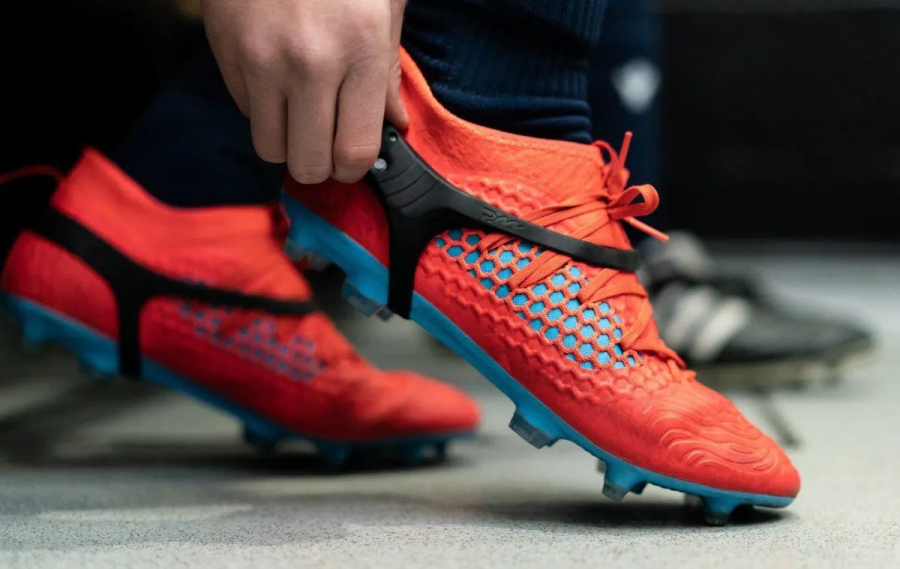
Best for: all-round
For an all-round wearable Oliver takes the spotlight. Oliver is priced at €149,99 including a year subscription. Afterwards, subscription is €9,99 per month. With the inclusion of both a high-frequency GPS and IMU, Oliver provides you with a lot of physical and technical stats at good accuracy.
For distance covered, Oliver makes a distinction between sprints, high-speed distance (i.e. running), walking, acceleration phase and deceleration phase. This provides you with all the information on speed during a match/training that you might possibly need, summarising it into your session intensity.
On top of that, due to the inclusion of GPS data Oliver gives you a heat-map of the field with all your actions. With regards to technical stats, Oliver measures your number of passes, number of shots, kicking power and ball possession. Making it all-round an excellent sensor choice!
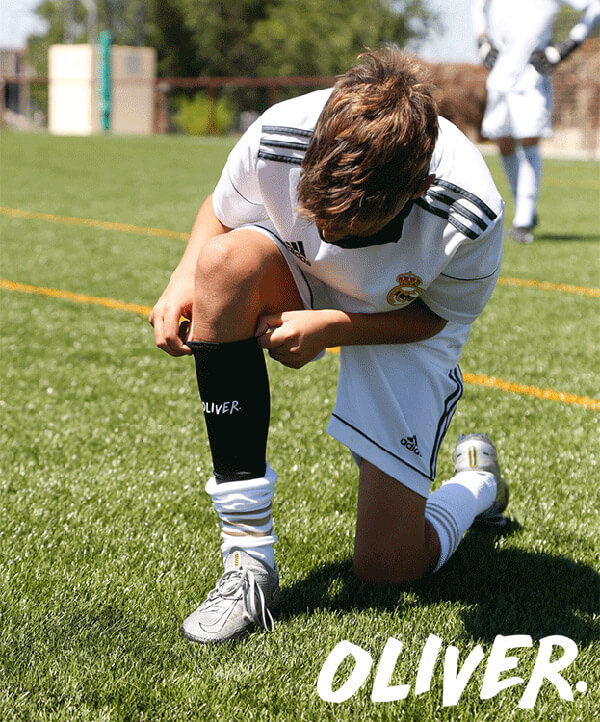
Ultimately there is a vast array of different wearables on the market, with each serving a better purpose for grassroots team at different price points. Decide what’s most important to you and your team, and pick the wearable that corresponds most!


